Kampachi first opened its doors in 1974 at Hotel Equatorial—which you may now recognise as the recently-revamped EQ—and has remained a pioneer of authentic Japanese cuisine in Malaysia ever since. The restaurant has built its sparkling reputation on its commitment to quality, serving only the finest air-flown ingredients in each dish at the hands of their team of Tokyo-trained chefs.
The latest addition to the team is none other than Mr Kyohei Igarashi, the restaurant’s newest Sushi Master. Chef Igarashi has over 20 years of experience in sushi making, with a resume that places him all around the world, from Canada, Macau, Bangkok, Hawaii and now Malaysia.
View this post on Instagram
I had the absolute privilege of witnessing Chef Igarashi’s work in-person, opting to try his 6-course omakase menu. Without further ado, here are my thoughts.
Right off the bat, before the meal had even begun, Kampachi’s considered decor had won me over. Tall ceilings and wooden motifs were accented with modern lighting and furniture, creating a warm, yet elevated atmosphere for my dining experience. I was immediately seated at the sushi bar, and given a quick run-down of the meal to follow.
One particular detail caught my attention—the bar itself is a staple of the authentic Japanese dining experience. Made of Hinoki wood, the rare and highly-sought material was hand-picked by EQ’s CEO Donald Lim for its significance to Japanese culture. The idea is that as you eat, the natural citrus scent of the unlacquered wood diffuses around you. It’s pretty neat.
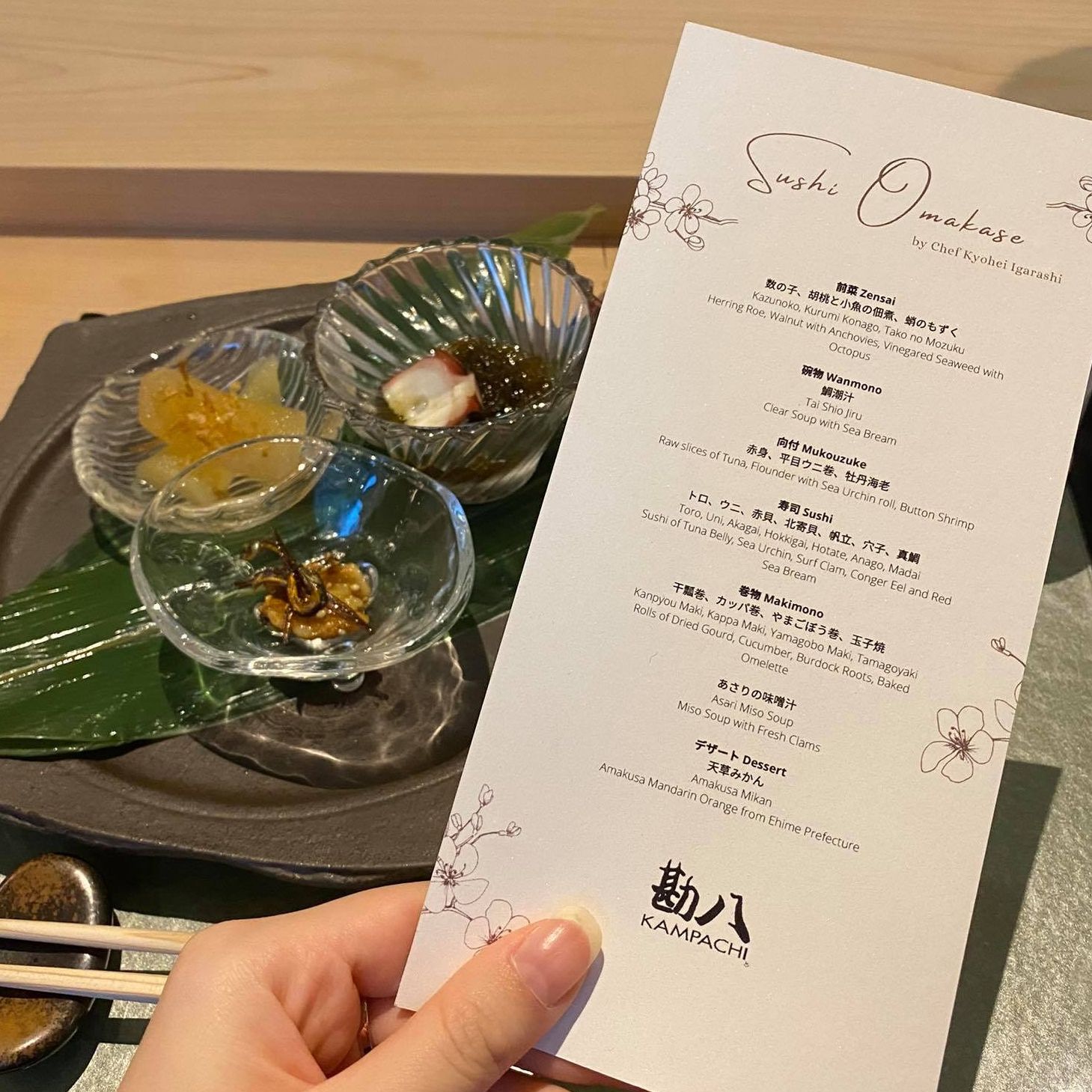
To begin the meal, we have the appetiser (zensai), which is comprised of Kazunoko (Herring Roe), Kurumi Konago (Walnut with Anchovies), and Tako no Mozuku (Vinegared Seaweed with Octopus).
The Kazunoko was a refreshing teaser for the palate; crispy and light, yet flavourful. Next up, the Tako no Mozuku had the perfect balance of acidity. I found that the sour vinegar was a great complement to the fresh octopus, and that the blend of textures made for an interesting bite. Finally, the Kurumi Konago was simple and sweet. The sugar and soy marinade that coated the anchovies worked really well with the earthy walnut—in fact, I liked this the most out of the three appetisers.
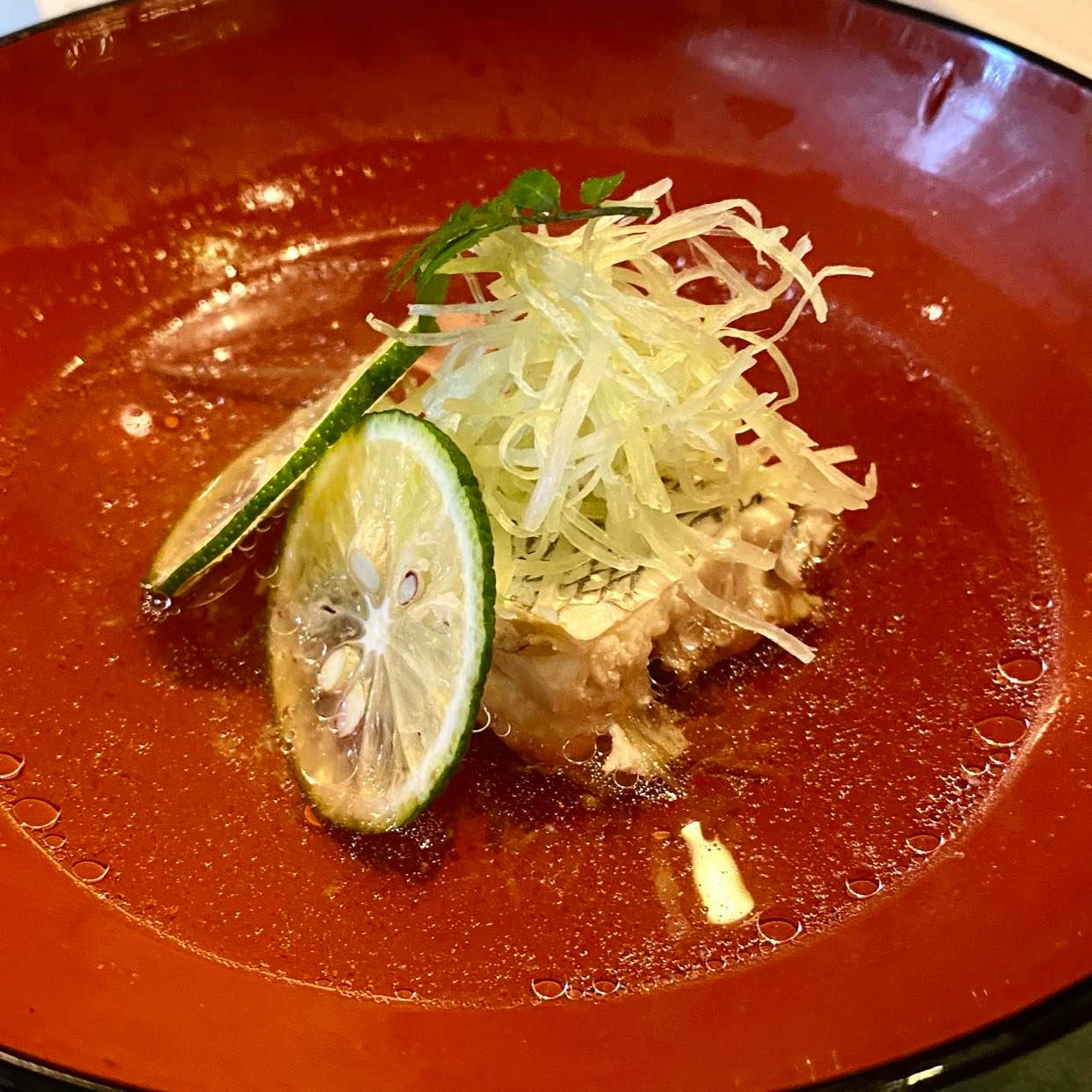
Next up, I was served the first—yes, first—soup course of the evening, Tai Shio Jiru (Clear Soup With Sea Bream). The clear broth was made from dashi, soy sauce, sake, and bonito, also known as the cornerstones of Japanese cuisine (minus mirin). The bream, nestled expertly behind those beautifully-sliced limes, was absolutely delicious. The only qualm I really have is with the number of bones in the cut—however, given the nature of the dish, this was to be expected.
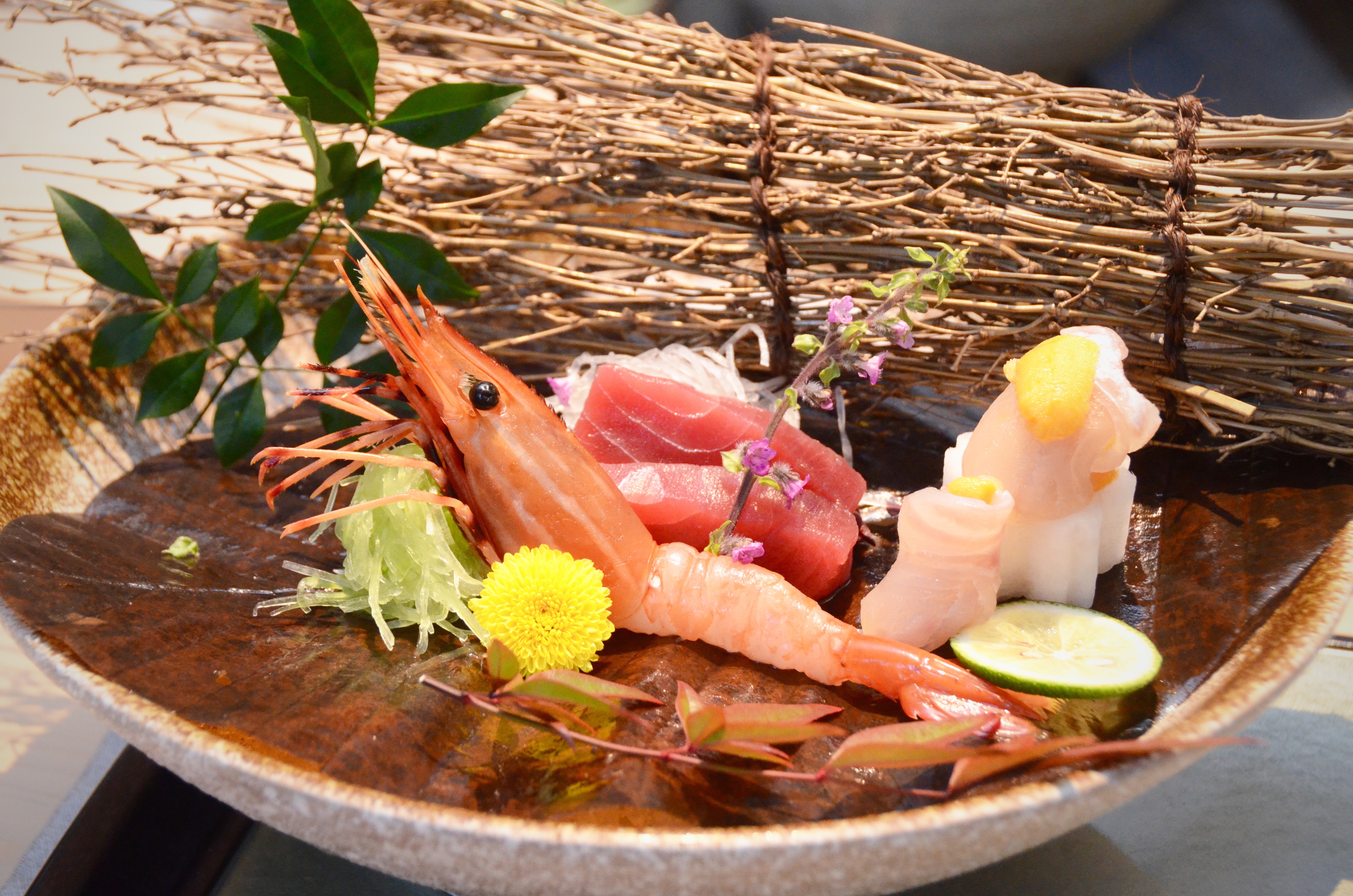
Finally, came the Mukouzuke sashimi course. As I watched Chef Igarashi prepare the meal, I was blown away by his admirable attention to detail. The passion he has for his art is palpable, and it really does translate into his creations. For example, the twiggy decoration you see in the background was transported by the chef himself—a personal touch that only goes to prove his dedication to the craft.
I watched him work in awe and before I knew it, a gorgeous spread of tuna, button shrimp, and flounder-wrapped sea urchin rolls had appeared before me.
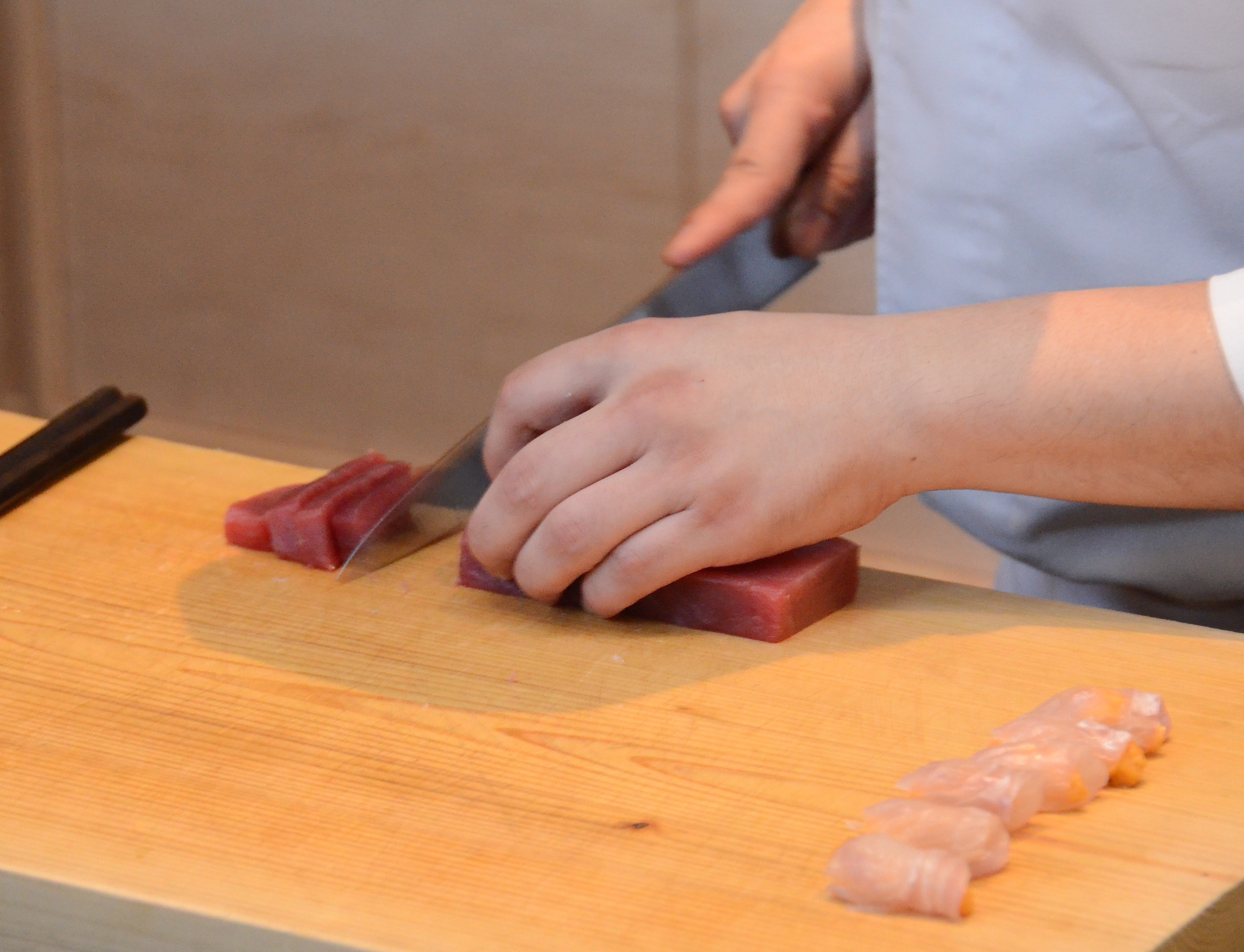
I began with the button shrimp sashimi, which had a creamy, buttery texture to it with just a hint of sweetness. Next, I tried the tuna sashimi, which was expectedly delicious (there’s a reason why tuna is such a firm favourite among sushi lovers). However, what I was most excited about was the flounder and sea urchin roll, which exceeded my expectations. The nutty flavour of the buttery sea urchin pairs really well with the soft flounder and left me craving more almost immediately.
Each slice of sashimi was served with a generous helping of freshly grated wasabi and a dish of Kampachi’s homemade soy sauce. In case you weren’t aware, the wasabi you would usually find in Japanese restaurants isn’t actually wasabi—more often than not, it is a mixture of horseradish and mustard (which are, to be fair, in the same family as the real wasabi root) with some green dye. The real thing, from the Wasabia japonica plant, is much sweeter, and has less of a kick. All in all, it’s wonderful!
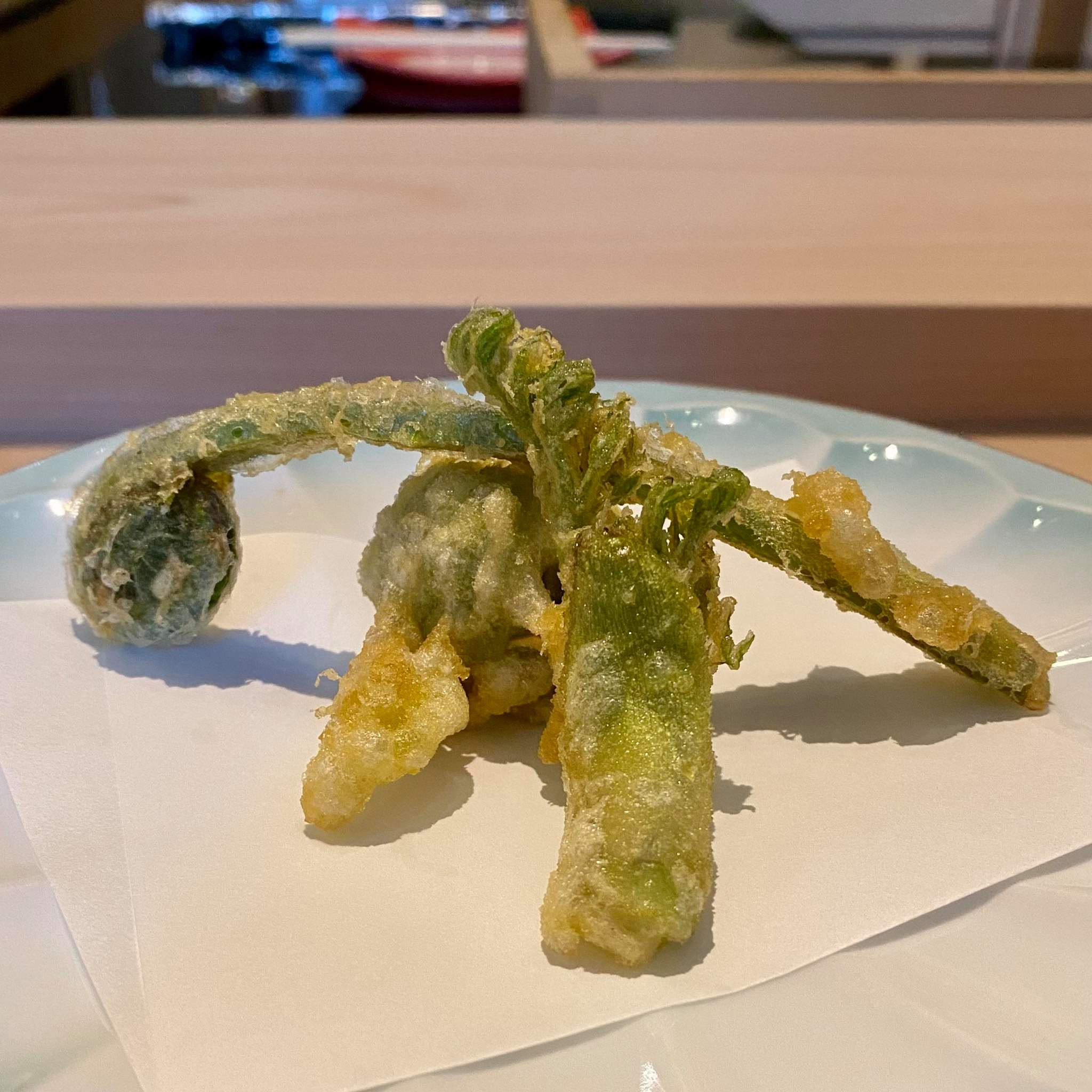
Then came the Sansai tempura served with charcoal salt. Spring vegetables like Kogomi ‘ostrich’ fern, Fukinoto butterbur shoots, and Taranome bud were sourced from the mountains of Japan and subsequently battered and fried until perfectly cooked and crisped. Of the three, my favourite was the Kogomi—the texture and taste were comparable to that of okra, though it was slightly sweeter.
FYI: If you’re scouring the picture of the menu above, you won’t find this dish listed. Chef Igarashi’s strength (and the beauty of omakase) lies in the ability to tailor the menu based on the available ingredients. As a result, when he had heard of the fresh shipment, this delicious vegetable course came naturally.
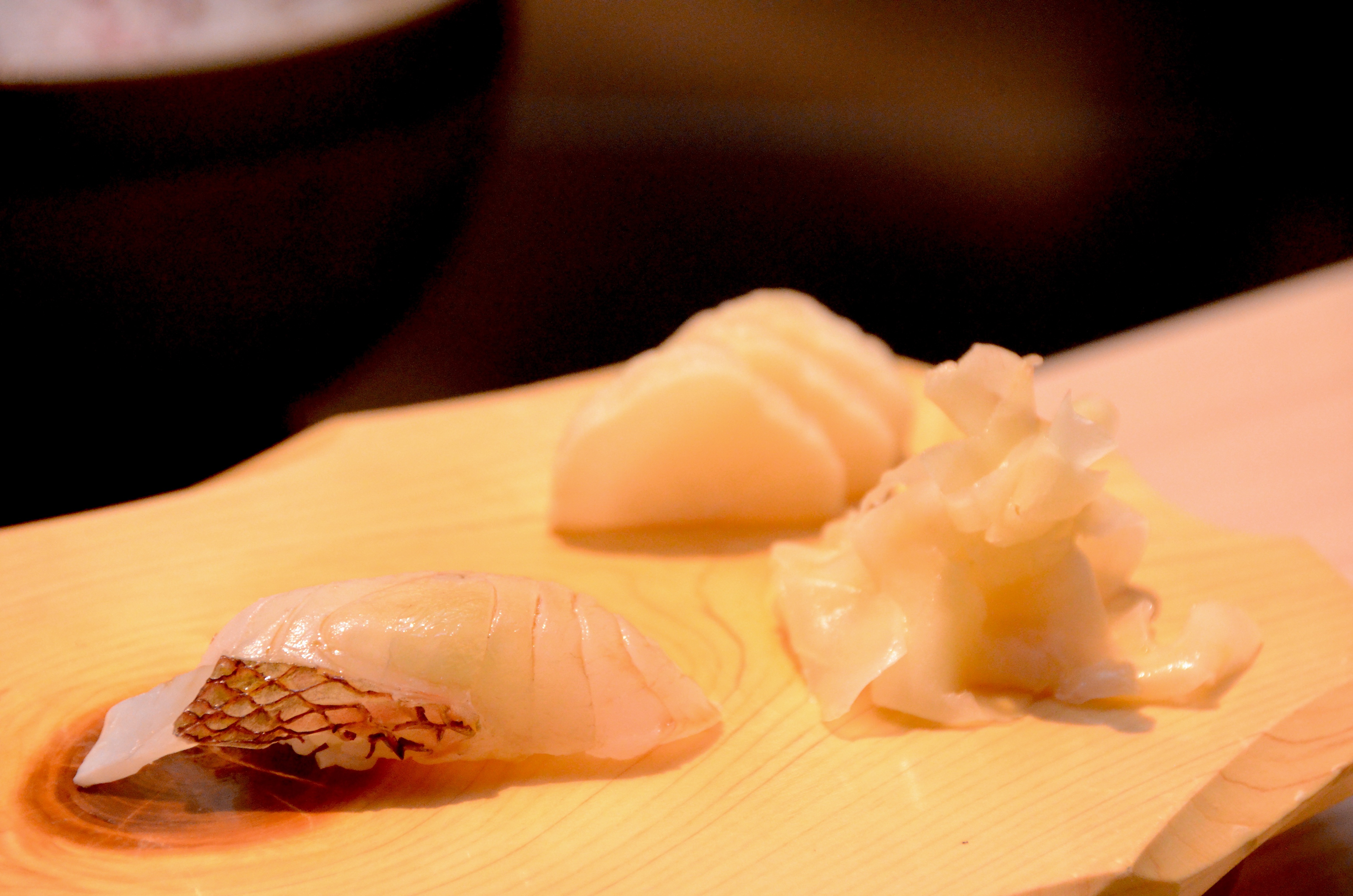
Next came the highlight of the evening—the sushi course. One by one, the mouthwatering lineup of fresh sushi appeared on the tray before me, from scallop to red snapper and beyond.
First up was the red snapper, boiled for a minute to bring out the flavour of the skin (a “traditional practise”, Chef Igarashi assures me) and lightly brushed with the perfect amount of soy sauce. Then came the hotate (scallop), fresh from the shell and still alive—it was smooth with a little bite and made with the perfect amount of rice. This was then followed by the second sea clam of the course, the akagai (Ark shell, AKA red clam). Incredibly sweet with an almost-crispy bite, this one was a surprise from start to finish.
Then came the chef’s personal recommendation, the hokkigai (surf’s clam). A little more prep went into this one—the still-kicking clam was boiled for a minute, then immediately cooled in an ice bath. Chef Igarashi explains that the temperature change made the flesh sweeter, and I am inclined to agree. Sure enough, it was my favourite of the three clams—sweet, smooth, and with a bite just like the others, but with a distinct flavour that gave it the edge.
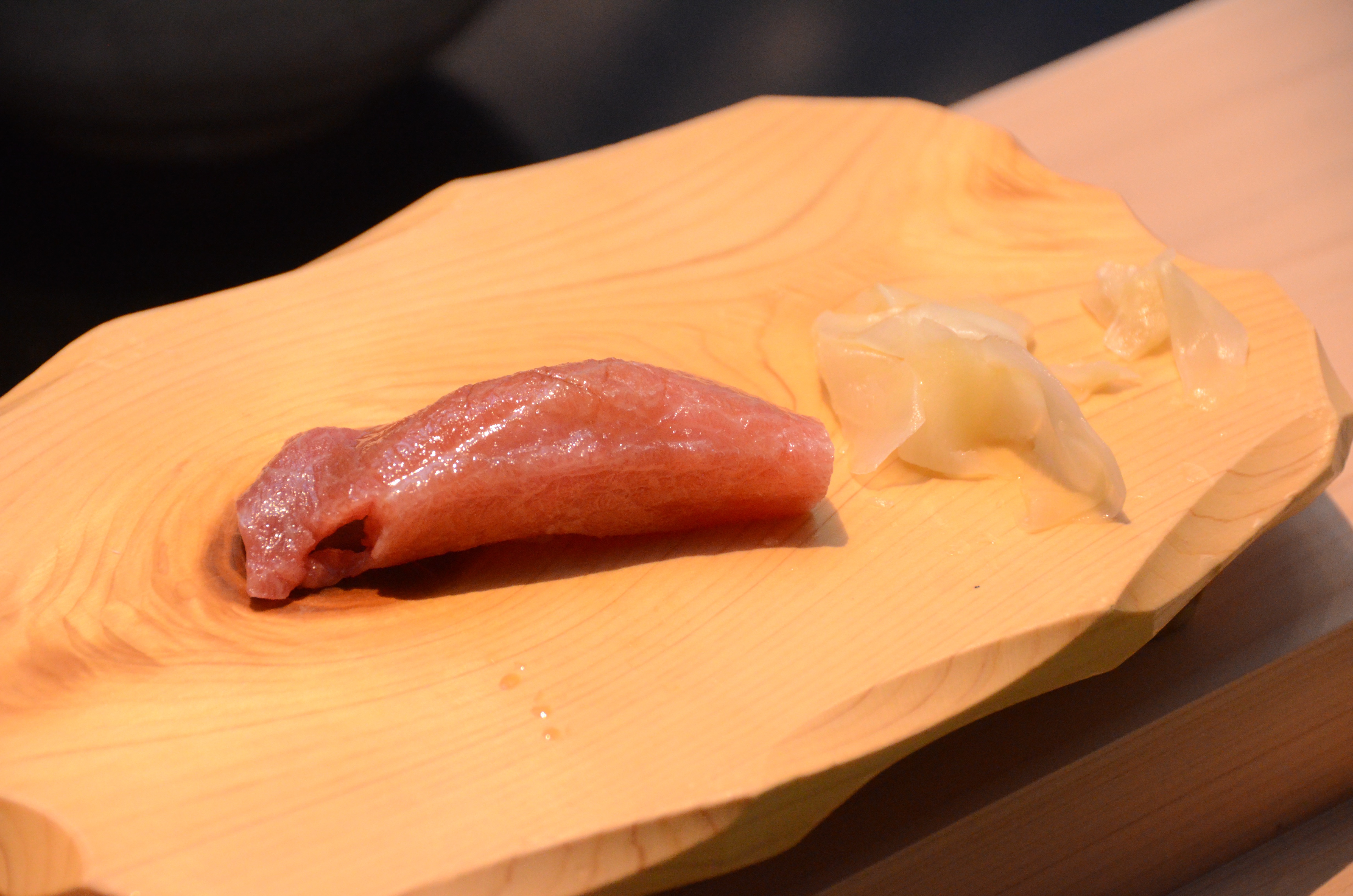
The Hokkaido Toro (tuna belly) from the sushi course was pretty much as good as you would expect it to be, and possibly better. It looked exactly like marbled beef and tasted incredibly decadent and flavourful. The anago (Conger eel or saltwater eel) involved a welcome change in preparation—according to the chef, the eel was boiled for 30 minutes and torched, with a sprinkle of yuzu over the top. Finally, came the creamy, sweet, rich, and savoury uni (sea urchin) maki—one of my favourite dishes of the evening.
TIP: Chef says that if you’re looking to make a good roll, you shouldn’t press your roll down too firmly—contrary to popular belief, you actually do want some air bubbles in there to keep the integrity of the maki intact!
Following the sushi course was yet another set of maki, only this time it was completely vegetarian. There were three choices presented, including soy-marinated Yamagobo (burdock) root, Kanpyō (dried gourd), and Kappa (cucumber) maki, all of which were refreshing pick-me-ups. Then came the second course of soup—miso soup with fresh clams—to close off the main portion of the evening.
DID YOU KNOW?: There are usually two soup courses in every traditional omakase, according to Chef Igarashi.
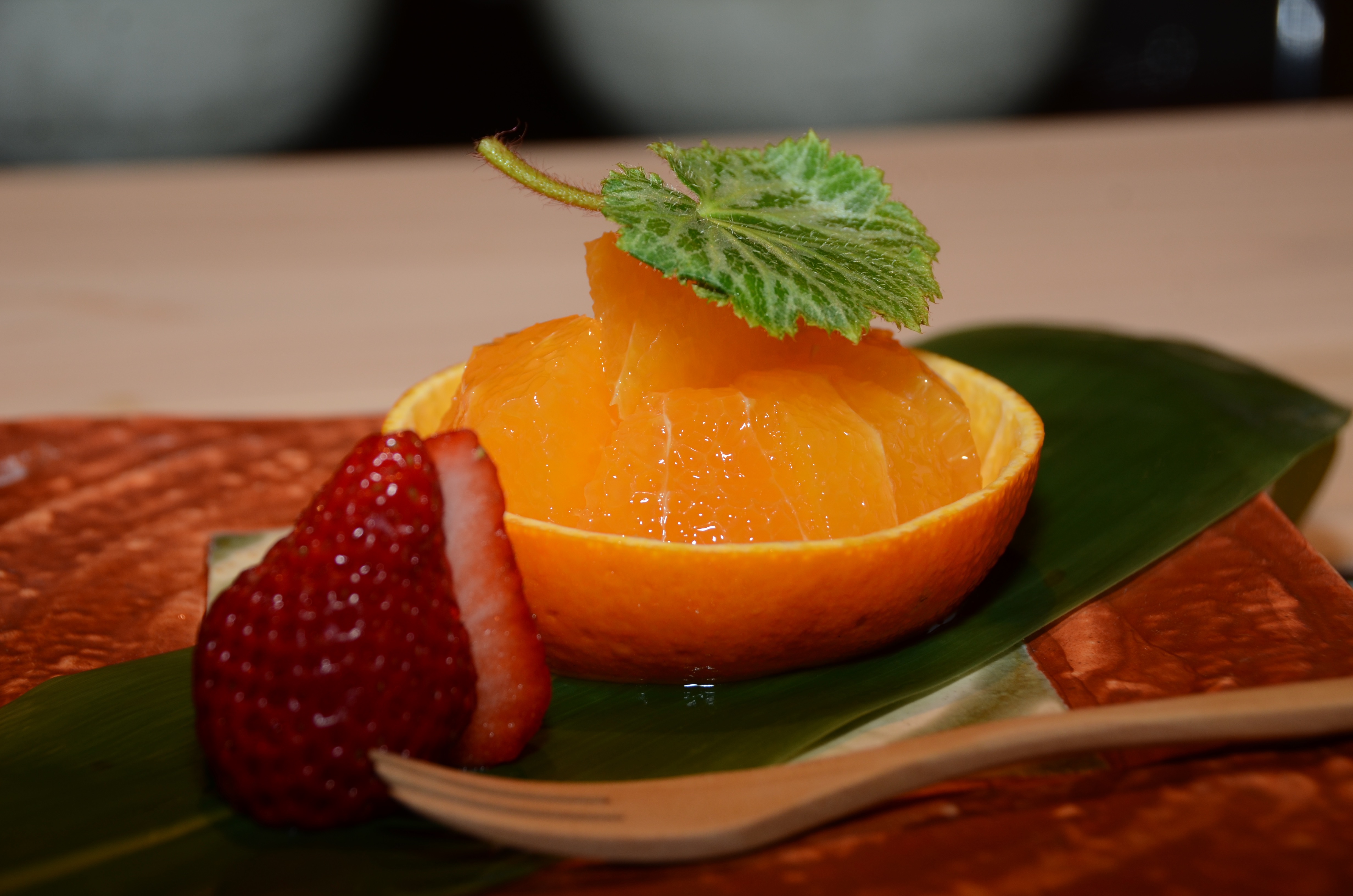
To round off the meal, we were served a refreshing fruit bowl made up of Japanese orange and strawberry, with a garnish of snow leaf flower.
If you’re keen to try the omakase menu for yourself, here are the details you’ll need:
Sushi Omakase by Chef Igarashi
Kampachi EQ, Equatorial Plaza, Jalan Sultan Ismail, Kuala Lumpur, 50250
Price: RM500 for 6 courses (with 2 days prior booking), RM700 for a custom menu (with 7 days advance booking)Available: 3 March – 31 May 2021 Time: Daily from 12PM – 3PM (last order 2.30PM), 6PM – 10PM (last order 9.30PM) Reservations: Call +60 3 2789 7722WhatsApp +60 12 278 9110Email [email protected]Book online here
Find more reviews here.
| SHARE THE STORY | |
| Explore More |




